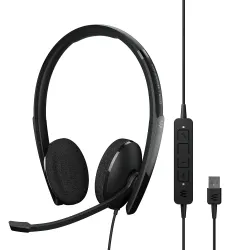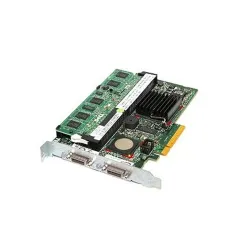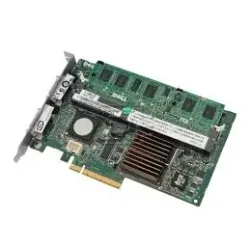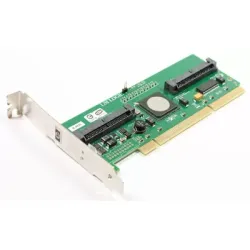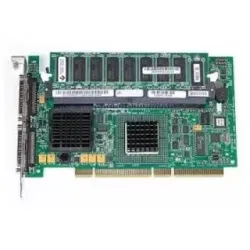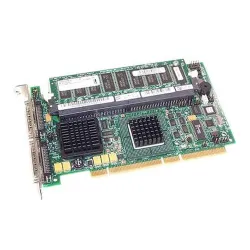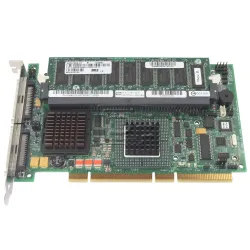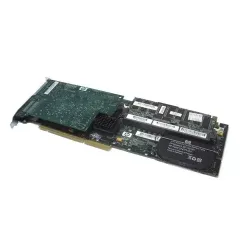The Types and Features of RAID Cards | Get the Best Brands Like Cisco Dell HP IBM Intel
Introduction to RAID Cards
RAID (Redundant Array of Inexpensive Disks) cards are hardware components that are used to implement RAID on a computer system. RAID is a data storage technology that combines multiple physical hard drives into a single logical unit to provide data redundancy, improved performance, or both.
RAID cards are typically installed into a computer's PCIe slot and offer hardware-based RAID functionality. They include a processor, cache memory, and firmware that manages the RAID operations independently of the host system's CPU.
RAID cards can support different RAID levels, such as RAID 0, RAID 1, RAID 5, RAID 6, RAID 10, and others, depending on the manufacturer and model. Some RAID cards also support advanced features like hot-swapping, automatic drive rebuilding, and online capacity expansion.
Using a RAID card can improve the overall performance of a computer system, especially in situations where the system is handling large amounts of data. They can also provide data protection in case of a hard drive failure, allowing the system to continue operating normally while the failed drive is replaced.
Overall, RAID cards can be a useful tool for IT professionals and businesses that require high-performance and reliable data storage solutions.
Types of RAID Cards and Which One is Right for You
There are two main types of RAID cards: hardware RAID cards and software RAID cards.
Hardware RAID cards are standalone devices that have their processors, memory, and firmware to handle RAID operations. They provide higher performance and more reliability than software RAID, as they offload the RAID processing from the system CPU.
Software RAID cards, on the other hand, use the system CPU to handle RAID operations. They are less expensive than hardware RAID cards, but may not offer the same level of performance and reliability.
When choosing a RAID card, you should consider several factors, including the number of drives you want to use, the RAID level you want to implement, and the performance and reliability requirements of your system.
For example, if you need to implement RAID 5 or RAID 6, which require complex calculations for parity data, a hardware RAID card with a dedicated processor and memory would be a better choice. If you only need to implement RAID 0 or RAID 1, a software RAID card may be sufficient.
Other factors to consider include the card's compatibility with your system, its maximum transfer rate, the number of ports it has, and any additional features it may offer, such as hot-swapping or cache memory.
Future Trends in RAID Card Technology
The field of RAID technology is constantly evolving, and several trends are likely to shape the future of RAID card technology:
Increased use of SSDs:
As solid-state drives (SSDs) become more affordable and widespread, RAID card manufacturers are likely to focus more on SSD support. This will enable faster data transfer rates and increased reliability.
Integration with cloud services:
As more businesses move their data to the cloud, RAID card manufacturers are likely to develop products that integrate with cloud services. This will enable easier management and monitoring of data storage, as well as increased scalability.
Greater use of artificial intelligence:
RAID card manufacturers may use artificial intelligence (AI) to improve the performance and reliability of RAID systems. AI algorithms can analyze data access patterns and optimize the RAID configuration accordingly.
More advanced data protection:
RAID card manufacturers are likely to develop more advanced data protection features to guard against data loss or corruption. This may include features such as advanced error correction and self-healing capabilities.
Increased focus on power efficiency:
As energy costs continue to rise, RAID card manufacturers are likely to develop more power-efficient products. This will enable businesses to reduce their energy costs and improve their environmental sustainability.
The specifications and features of the Cisco, Dell, HP, IBM, and Intel RAID cards:
Cisco:
Offers a range of RAID card options, including the Cisco 12G Modular Raid Controller and the Cisco UCS 12G SAS Modular Raid Controller.
Supports various RAID levels, including RAID 0, 1, 5, 6, and 10.
Offers advanced features like automatic drive rebuilding and hot-swapping.
Dell:
Offers a range of RAID card options, including the PERC H740P RAID Controller and the HBA330 Adapter.
Supports various RAID levels, including RAID 0, 1, 5, 6, and 10.
Offers advanced features like hot-swapping and online capacity expansion.
HP:
Offers a range of RAID card options, including the HP Smart Array P408i-a SR Gen10 Controller and the H240 Smart Host Bus Adapter.
Supports various RAID levels, including RAID 0, 1, 5, 6, and 10.
Offers advanced features like hot-swapping, automatic drive rebuilding, and online capacity expansion.
IBM:
Offers a range of RAID card options, including the ServeRAID M1215 SAS/SATA Controller and the ServeRAID M5210 SAS/SATA Controller.
Supports various RAID levels, including RAID 0, 1, 5, 6, and 10.
Offers advanced features like hot-swapping, automatic drive rebuilding, and online capacity expansion.
Intel:
Offers a range of RAID card options, including the Intel RAID RS3DC080 Controller and the Intel RAID SAS Expander Card RES2SV240.
Supports various RAID levels, including RAID 0, 1, 5, 6, and 10.
Offers advanced features like hot-swapping, automatic drive rebuilding, and online capacity expansion.
A RAID card is a hardware device used to manage data stored in a RAID (Redundant Array of Independent Disks) configuration. It provides the necessary interface between the hard drives and the computer's motherboard, allowing for faster and more efficient data transfer, as well as data redundancy and protection against drive failures.
If a RAID card fails, the RAID configuration it was managing may become inaccessible or experience data corruption. The severity of the issue will depend on the type of RAID configuration and the level of redundancy built into the system. In some cases, the data may still be recoverable by replacing the failed RAID card with a new one and rebuilding the RAID array. However, it is always recommended to have backups of important data to prevent data loss in case of hardware failures.
RAID cards use batteries to provide power for the card's cache memory in case of a sudden power loss or system shutdown. The cache memory is used to temporarily store data before it is written to the hard drives, which can improve system performance. If the power is lost before the data is written to the drives, the data can be lost or corrupted. The battery on a RAID card ensures that the cache memory is backed up and the data is written to the drives, even in case of power loss or system shutdown.
RAID cards can be expensive because they are specialized hardware components that provide advanced data storage and management features, such as data redundancy, improved performance, and data protection. They often have a dedicated processor, cache memory, and other components that make them more powerful than standard storage controllers. Additionally, the cost of components and development, manufacturing, and testing processes all contribute to the overall cost of a RAID card. The price may also depend on the level of RAID configuration and the number of drives the card can support.



